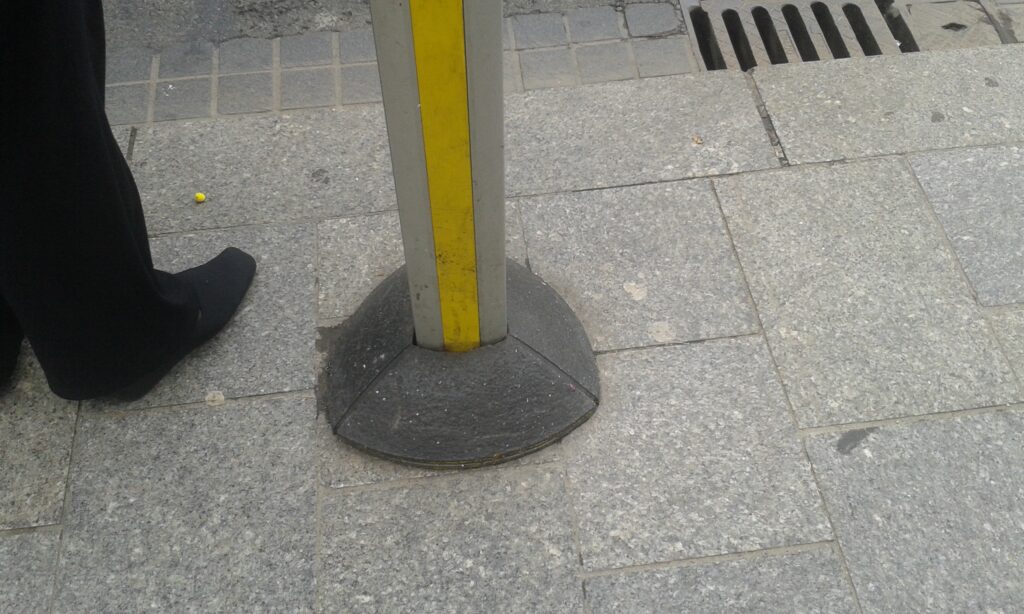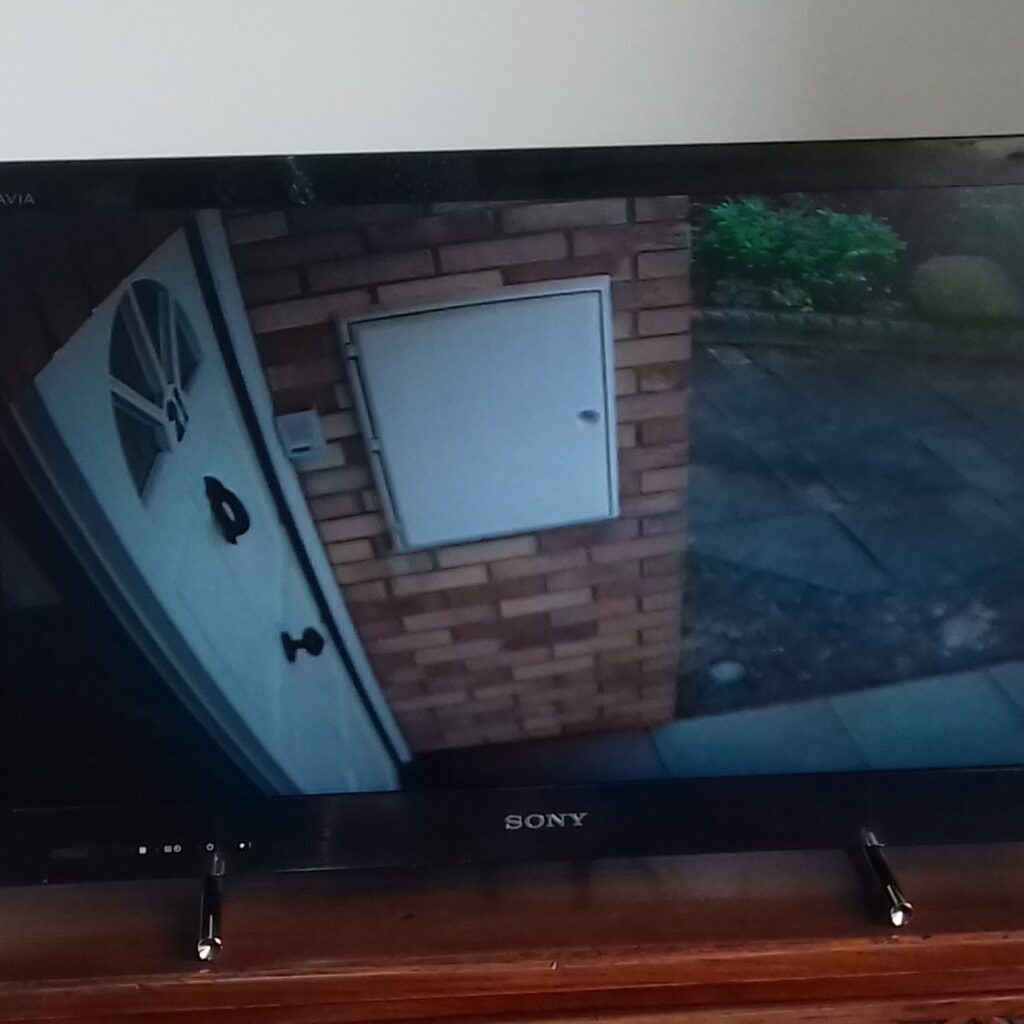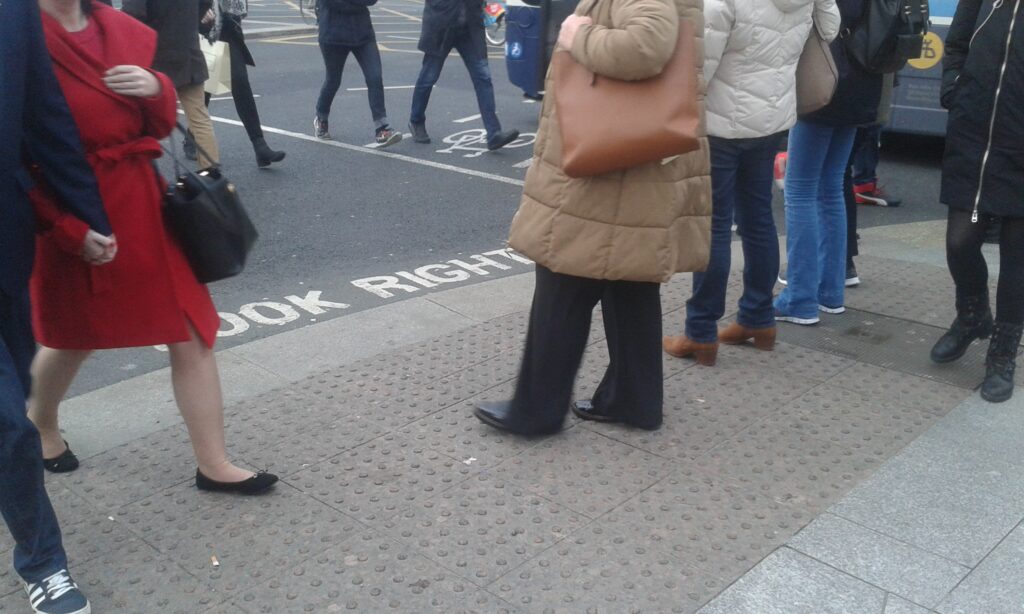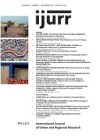What would a geography of urban security that takes disabled people’s lives seriously look like? This is a question I have grappled with over the past two years as I have conducted research in Ireland’s cities, exploring the impact of fear and experience of violence and hostility on disabled people’s everyday use of urban space (Edwards and Maxwell 2019). Examining disabled people’s discursive constructions and material practices of safety as they navigate the boundary of in/security in the spaces of their everyday (urban) lives, their narratives appear a world away from the discourses of city stakeholders and urban policy initiatives that seek to secure the city against various extant threats.
This is a disconnect that goes beyond everyday talk of safety and pronouncements of policy documents, however, to the conceptual sphere of how we frame and think about security. As an academic endeavour, geographies of security have not engaged with, or crossed paths with, geographies of disability. This is a notable absence, and one that I suggest we would do well to consider, not just in terms of examining the meaning of urban security in disabled people’s lives, but as a way of expanding and complicating our understanding of urban security itself. I offer this essay as a reflection on this disconnect, but perhaps more fruitfully, also as a provocation to explore axes of enquiry that have the potential to foster a deeper understanding of the complex entanglements between urban security and disability.
Framing disability
Any explanation of the absence of disabled people’s lives from the arena of urban security has to begin with our understanding of disability itself, and the ways in which this has contributed to societal perceptions about people with disabilities being “out of place” in diverse environments (Kitchin 1998). Despite decades of legal and policy change, Western societies continue to perpetuate constructions of disabled people rooted in dependency and vulnerability, and of disabled bodies as abject and abnormal (Hughes 2009). While many people with disabilities live independently in their community, others still live their lives behind closed doors in private or semi-private institutional spaces.
The legacy of the historical institutionalisation of disabled people, and of paternalistic constructions of disability itself, has a number of implications for how we think about disability and urban security. Firstly, people with disabilities are often not regarded as occupiers of particular spaces in the city (public space, for example), which manifests itself in lack of accessible environments and other forms of exclusion (Imrie 1996).

Inaccessible urban environments. Photo: Claire Edwards.
Secondly, threats to security as we may understand them, or as they are constituted in terms of the more general urban populace, may not be recognised or named in the same way for disabled people. To take the most extreme form of insecurity – personal violence – it is notable that violence as it is perpetrated against disabled people is often labelled as abuse, rather than as violent crime, particularly in institutionalised settings. To this end, abuse becomes an incident to be dealt with by a specialist (heath) service, rather than something to be taken seriously by state justice agencies or the criminal justice system (Edwards et al. 2012).
Thirdly, and relatedly, dominant understandings of security in disabled people’s lives often focus on safety and safeguarding, which foregrounds the enactment of protection against risk. This is a largely individualising discourse, which I would argue distracts attention from the broader societal processes that shape experiences and perceptions of in/security in disabled people’s lives.
Geographies of security, geographies of disability
It is some of these complexities – in how disability itself has been defined – that begin to explain the absence of disabled people’s lives in discussions about urban security. As a sub-discipline, geographies of security has overwhelmingly constructed security in terms of geopolitical processes situated at the national and supranational level, and associated with state apparatuses and discourses (Noxolo 2017). Whether in terms of concerns about global terror threats, criminality or economic insecurity, the dominance of what Philo (2012: 2) refers to as “big-S” security has often crowded out meanings of security in the more mundane, everyday spaces of people’s lives.
In the urban sphere too, supranational security concerns find their representation and imprint in urban governance processes designed to secure the city. As Müller (2020) notes, we should understand these processes as part of a gradual reframing of a range of concerns and threats as “security issues”. However, urban strategies to address security in the context of crime prevention and public safety, for example, are often constructed around a narrow view of both who constitutes the public, and where insecurity takes place. Policies frequently foreground public space in planning for urban safety, while city planners see urban security as a “goal for technical solutions” (Tulumello 2017: 404), through greater CCTV or initiatives to “design out crime” from the urban fabric.
Despite the fact that security has tended to revolve around official discourses and extant global threats, a growing body of work is seeking to explore how people give meaning to security in their everyday lives, including the nuanced ways in which city dwellers assemble and enact security (Müller 2020). A number of studies have highlighted the importance of attending to the space of the home, for example, in understanding people’s lived experiences of urban security and insecurity: in the context of domestic violence, this includes the home as a site of terror in the most intimate spaces of women’s lives (Pain 2014). Recent work has also sought to foreground everyday meanings and strategies of security in the lives of a range of diverse groups: Botterill et al.’s (2019) research, for example, explores minority ethnic young people’s security strategies as they navigate their everyday lives in Scotland.
What potential lies in these ideas in terms of interrogating everyday issues of urban security in disabled people’s lives?
While not foregrounding security as a theme, scholars working within the arena of geographies of disability have developed a rich vein of work addressing disabled people’s encounters with the city. This work highlights the socio-spatial exclusions that can result from pervasive societal discourses that frame people with disabilities in terms of vulnerability and dependency. Earlier work in the sub-discipline focused on the barriers faced in terms of physical access to the city, and the practices of ableism that underpin thoughtless urban design (Imrie 1996).
More recent research has engaged with disabled people’s embodied, affectual and sensory encounters as they navigate the city. This has included the strategies they employ in public spaces to manage encounters with others (McClimens et al. 2014; Worth 2013), how people with disabilities seek to foster spaces of inclusion and belonging in the community (Morrison et al. 2020), and the lived experience of urban hate crime (Hall and Bates 2019). Geographers are increasingly taking a relational approach to disability in these analyses, recognising that “subjective experiences of both disability and non-disability emerge through shifting relations with other bodies, objects and spaces” (Hall and Wilton 2017: 732). This framing helps challenge the fixity of disabled subjectivities grounded in vulnerability, and indeed, of particular spaces as inclusive and enabling, or exclusive and marginalising.
Three axes of enquiry
Pulling together these conceptual developments in both geographies of disability and security, and reflecting on my own research with people with disabilities in Ireland, I suggest that there are fruitful points of intersection that can enable us to deepen our understanding of the entanglements between disabled people’s lives and urban in/security. Here, I want to propose three potential axes of enquiry.
Socio-economic inequalities and urban precarity
The first axis relates to recognising how disabled people’s everyday geographies of urban in/security are bound up in wider, socio-economic processes, enacted at the national or supra-national scale. Economic insecurity and the erosion of state support for people with disabilities mean that many people with disabilities live precarious urban lives, both in terms of employment and access to housing. It is well-recognised that people with disabilities are more likely to be living in poverty than their able-bodied counterparts, and that processes of austerity have had a disproportionate impact on their lives.
It is notable that in my own research, nearly all the participants were unemployed, or unable to work. Many survived on low incomes, and some lived in rented or social housing in significantly disadvantaged areas, where the surrounding physical and social environment contributed to feelings of in/security. One man with a visual impairment, who lived in a busy inner-city area and had experienced several acts of hostility in his neighbourhood, had been told by the Gardaí (Irish police force) that he should move house. As he pointed out to them, however, this mobility or flexibility is not a given for disabled people, as the cost of, and access to, appropriate housing can be prohibitive. The key point here is that geographies of security offer the opportunity to explore how broader socio-economic processes have implications for, and are bound up in, disabled people’s everyday perceptions and practices of security, and the patterning of disabled people’s lives across the city. However, recognition of these processes is often absent in individualising discourses which focus only on the safeguarding of people with disabilities.
Re-thinking urban space
The second intervention suggested by recent work on geographies of security and disability is an expansion of our understanding of urban space in thinking about in/security. This means refocusing attention on the role that more hidden urban sites and spaces play in constituting everyday experiences of in/security, including the private space of the home. For some people with disabilities, this may include semi-private spaces as they are constituted around small group community living arrangements.
While many participants in my research articulated meanings of in/security in relation to navigating public space, the home was also referenced as a vital site where perceptions and practices of in/security were played out. For some, it was associated with significant insecurity for a range of reasons that included experience of domestic violence, lack of accessibility, and threat of intruders. Recognising particular objects as visual signifiers, some participants highlighted the importance of ensuring that a house could not be identified as one where someone with a disability lived. Ramps, outside grab rails, and other objects were seen by some as having the potential to attract unwarranted attention. In response, some participants had installed a range of domestic security technologies, from cameras to personal alarms. We cannot assume, then, that the home is a safe space for people with disabilities, and its meanings require further interrogation. This is particularly the case given that much abuse perpetrated against people with disabilities takes place by people known to the person, often in the intimate (domestic) sphere of care relationships (Thomas 2011).

Home as a safe space? Enacting domestic security through participants’ use of surveillance technologies. Photo: Claire Edwards.
Embodied urban in/securities
Finally, intersecting geographies of security and disability suggests a need to focus on embodied, corporeal urban in/securities as they are enacted by people with disabilities. Geographers of disability have foregrounded the recursive, constitutive relationship between diverse bodily capacities and space, which creates experiences of (dis)ability in the urban realm. This also means paying attention to the ways in which assistive devices and supports – including wheelchairs, white canes, guide dogs and mobile phones – become part of, extend, and mediate disabled people’s corporeal encounters with in/security.
The corporeal is a key site at which feelings and practices of security are played out. Participants in the study articulated vividly the affectual and sensory feelings of security and insecurity felt in urban space, from the act of looking over one’s shoulder to see traffic coming from behind for a member of the Deaf community, to navigating road crossings and pavements in a wheelchair, to listening hard for auditory clues about who might be present in public space for people with visual impairments.

Encountering urban in/security: negotiating bodies and environments. Photo: Claire Edwards.
Reflecting the construction of disabled subjectivities, participants were only too aware of societal constructions and perceptions about the vulnerable disabled body, and of the potential for others to see them as an “easy target”. Objects and assistive aids were a key part of this constructed subjectivity, and were heavily implicated in disabled people’s corporeal encounters with in/security, as well as the self-securitisation strategies they deploy in their everyday lives. Some people with visual impairments chose not to use white canes in certain public spaces as it made them feel uncomfortable, for example. Others engaged in wearing mobile technologies, such as mobile cameras, designed to act as a deterrent to those who may be a potential threat. We need then to take seriously these diverse forms of corporeality in making sense of urban security, not just in thinking about the diverse bodily capacities engendered by specific impairments (such as hearing loss, or visual impairment), but also in the potential to challenge ideas about the bounded, embodied self.
Diversifying urban security
In total, these axes offer the potential for a more expansive and nuanced understanding of urban in/security which necessarily means attending to a much wider assemblage of processes, objects, relations, spaces, and groups than “big-S” understandings of security would suggest. Looking through the lens of disability offers an understanding of urban security that attends to diverse corporealities and spaces that have hitherto been hidden in analyses of urban security, particularly in “official” discourses about securing the city.
Refracting the other way, bringing the lens of urban security to disabled people’s lives has the potential to make visible the interconnections between disabled people’s seemingly individualised experiences of in/security and broader security issues, concerns or threats as they find expression in the urban realm. Discussions of disabled people’s relationship with the city rarely recognise or address security as a dimension of their lived experience. And yet, this is never more important than at the current time when a growing range of security concerns relating to health, economic in/security, and housing precarity are increasingly shaping the spatialities of disabled people’s urban lives.
Claire Edwards is Lecturer in Social Policy and Director of the Institute for Social Science in the 21st Century (ISS21) at University College Cork, Ireland. Her work sits at the intersection of urban geography, social policy and critical disability studies.
Acknowledgements
This essay is based on the research project Disability and the Creation of Safe(r) Space, funded by the Irish research Council under its Research for Policy and Society (2016) Scheme.
All essays on The Disabling City
Introduction: The Disabling City
Rivke Jaffe
Crip Mobility Justice: Ableism and Active Transportation Debates
Aimi Hamraie
Disability and the Pursuit Of Mobility: Risks And Opportunities in the Indian Urbanscape
Renu Addlakha
The City as Taskscape: An Enabling Theory for the City
Ellen van Holstein
Geographies of Security and Disabled People’s Urban Lives
Claire Edwards
Related IJURR articles on The Disabling City
Urban Citizenship, the Right to the City and Politics of Disability in Istanbul
Dikmen Bezmez
© 2020 THE AUTHOR. INTERNATIONAL JOURNAL OF URBAN AND REGIONAL RESEARCH, PUBLISHED BY JOHN WILEY & SONS LTD UNDER LICENSE BY URBAN RESEARCH PUBLICATIONS LIMITED
This is an open access article under the terms of the Creative Commons Attribution-NonCommercial-NoDerivs License, which permits use and distribution in any medium, provided the original work is properly cited, the use is non-commercial and no modifications or adaptations are made.
